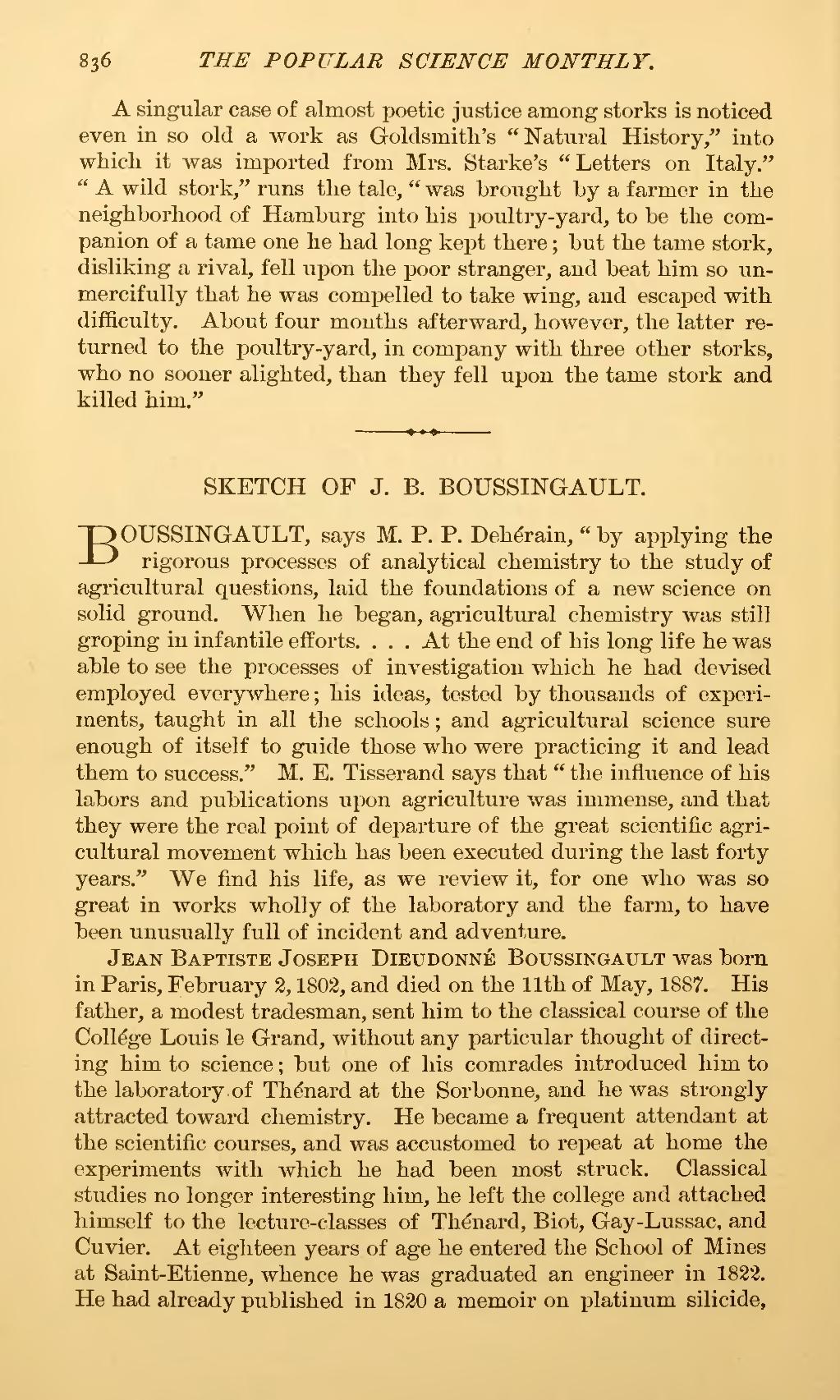A singular case of almost poetic justice among storks is noticed even in so old a work as Goldsmith's "Natural History," into which, it was imported from Mrs. Starke's "Letters on Italy." "A wild stork," runs the tale, "was brought by a farmer in the neighborhood of Hamburg into his poultry-yard, to be the companion of a tame one he had long kept there; but the tame stork, disliking a rival, fell upon the poor stranger, and beat him so unmercifully that he was compelled to take wing, and escaped with difficulty. About four months afterward, however, the latter returned to the poultry-yard, in company with three other storks, who no sooner alighted, than they fell upon the tame stork and killed him."
| SKETCH OF J. B. BOUSSINGAULT. |
BOUSSINGAULT, says M. P. P. Dehérain, "by applying the rigorous processes of analytical chemistry to the study of agricultural questions, laid the foundations of a new science on solid ground. When he began, agricultural chemistry was still groping in infantile efforts. ... At the end of his long life he was able to see the processes of investigation which he had devised employed everywhere; his ideas, tested by thousands of experiments, taught in all the schools; and agricultural science sure enough of itself to guide those who were practicing it and lead them to success." M. E. Tisserand says that "the influence of his labors and publications upon agriculture was immense, and that they were the real point of departure of the great scientific agricultural movement which has been executed during the last forty years." We find his life, as we review it, for one who was so great in works wholly of the laboratory and the farm, to have been unusually full of incident and adventure.
Jean Baptiste Joseph Dieudonné Boussingault was born in Paris, February 2, 1802, and died on the 11th of May, 1887. His father, a modest tradesman, sent him to the classical course of the Collége Louis le Grand, without any particular thought of directing him to science; but one of his comrades introduced him to the laboratory. of Thénard at the Sorbonne, and he was strongly attracted toward chemistry. He became a frequent attendant at the scientific courses, and was accustomed to repeat at home the experiments with which he had been most struck. Classical studies no longer interesting him, he left the college and attached himself to the lecture-classes of Thénard, Biot, Gay-Lussac, and Cuvier, At eighteen years of age he entered the School of Mines at Saint-Etienne, whence he was graduated an engineer in 1822. He had already published in 1820 a memoir on platinum silicide,
